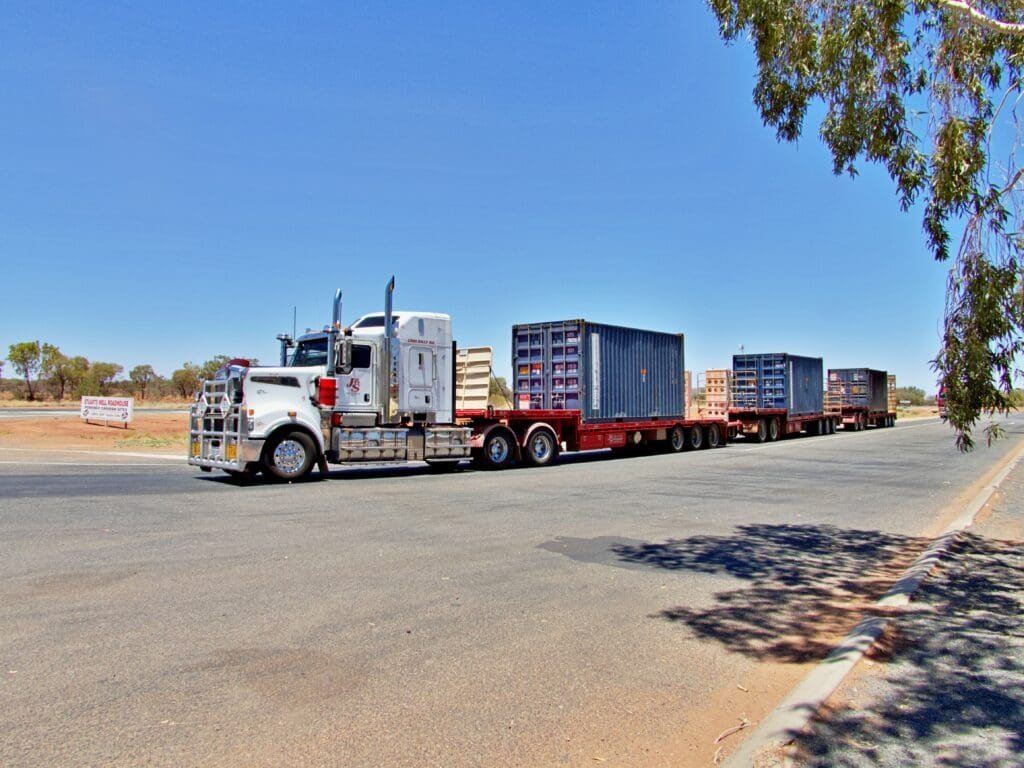If you’ve been looking for a new driving job lately, you’ve probably noticed something interesting: there are a lot of listings out there—but landing the right one isn’t as easy as it looks.
That’s because the CDL job market has changed. Demand for truck drivers is still strong, but competition is growing too. New graduates, experienced drivers switching companies, and even returning retirees are all back on the road. So how do you make sure you’re not just another application in the pile?
Whether you’re fresh out of training or have years behind the wheel, this guide is here to help you stand out and make smart career moves. We’ll walk through how to spot quality cdl jobs, how to catch a recruiter’s attention, what kind of pay and benefits to expect, and what red flags to avoid along the way.
The goal? To help you find a job that doesn’t just fill your calendar—but actually fits your lifestyle and long-term goals.
Let’s dive into what it takes to land the right role in today’s competitive trucking industry.
Understanding Today’s CDL Job Landscape

If you’re a CDL driver trying to make sense of the job market right now, you’re not alone. Between driver shortages, shifting freight demands, and new technologies changing how the industry operates, it can feel like the ground is constantly moving beneath your tires.
But here’s the good news: there are still plenty of opportunities out there—it just takes a little know-how to find the right one for you.
Today’s job market isn’t just about long-haul routes and coast-to-coast runs. Local, regional, and dedicated routes are becoming more common as companies adapt to faster delivery expectations and e-commerce growth. That means more chances to be home daily or weekly, depending on the position and location.
Company drivers remain the most common route, especially for those looking for steady income, benefits, and equipment provided by the employer. On the flip side, owner-operators and lease-purchase programs offer more independence—but also come with more responsibility, like managing your own truck and expenses.
There’s also more competition than ever before. As training schools turn out new drivers and experienced pros look for better opportunities, hiring managers are getting pickier. Standing out means knowing your options and approaching the job hunt strategically.
Despite the challenges, experienced drivers and newcomers alike are still landing great roles in cdl jobs—especially when they understand the current market trends and focus their search accordingly.
Whether you’re just starting out or making a move, knowing where the industry is headed can give you the edge you need to land a job that pays well and fits your lifestyle.
How to Find the Best CDL Job Opportunities Today

Let’s be honest—looking for a new job can feel like a job in itself. With so many options online, it’s easy to get overwhelmed or waste time chasing leads that go nowhere. The key to landing a great position isn’t just applying to every listing you see—it’s knowing where to look and how to look smart.
Start with the basics: use reputable job boards that specialize in CDL positions. Websites like CDLjobs.com, TruckingTruth, or even the careers pages of major carriers often post roles you won’t see elsewhere. These platforms let you filter by route type, region, and experience level so you’re not digging through jobs that don’t fit your needs.
But don’t stop with job boards. Social media can be surprisingly useful—Facebook trucking groups, LinkedIn, and even TikTok are full of drivers sharing tips, reviews, and open positions. Ask around. You’d be surprised how many great jobs come from word of mouth, especially through dispatchers, current drivers, or training school connections.
Also, keep an eye out for career fairs and hiring events in your area. These give you the chance to meet recruiters face-to-face, ask real questions, and sometimes even get hired on the spot. If you’re a newer driver, some of these events also offer resume help and interview prep.
And if your goal is more home time, be sure to focus your search on local cdl jobs, which are becoming more common as companies look for ways to meet same-day and next-day delivery demands. These positions often fill quickly, so staying active in your search and acting fast can make all the difference.
The CDL job market rewards persistence and preparation. The more proactive and informed you are, the better chance you have of finding not just a job—but the right one.
Evaluating Pay, Benefits & Growth Potential

Not all driving jobs are created equal—and neither are the paychecks that come with them. If you’re comparing offers, it’s important to look beyond just the cents-per-mile (CPM) rate. True earning potential comes down to the whole package: pay, benefits, home time, and growth opportunities.
First, let’s break down pay. Some companies offer straight CPM, while others pay a flat salary or a percentage of each load. CPM can look appealing, but it only tells part of the story. Are you guaranteed a minimum number of miles? Do you get paid for layovers, detention time, or deadhead miles? These small details can have a big impact on your take-home pay.
Benefits are another major factor. Look for medical, dental, and retirement plans—and don’t overlook the value of paid time off, sign-on bonuses, or tuition reimbursement if you’re just starting out. These extras can add serious value over time, even if the base pay is slightly lower than another offer.
And let’s talk about career growth. Some companies offer clear paths to advance into roles like trainer, dispatcher, or even operations. Others offer lease-to-own programs for drivers who eventually want to run their own business. Think about where you want to be in a few years—not just your next paycheck.
One thing many drivers notice after switching companies or routes is a noticeable jump in cdl drivers income, especially when moving into specialized hauls like tanker, flatbed, or HazMat. These roles often pay more due to the added responsibility and required endorsements.
At the end of the day, the best-paying job isn’t always the one with the highest advertised rate—it’s the one that gives you stability, respect, and a clear path forward.
How to Stand Out to Recruiters and Hiring Managers

Let’s be honest—getting hired isn’t just about having a CDL. With so many drivers on the market, especially in competitive regions, companies are looking for more than just a license and a clean record. If you really want to stand out, you’ve got to think like a recruiter and show them you’re the kind of driver they want on their team.
First, make sure your resume (yes, drivers should have one too) is clean and easy to read. Keep it simple—list your experience, equipment you’ve handled, endorsements, safety records, and any certifications you’ve earned. A one-page summary is all you need, but it should be professional and typo-free.
Your driving record also speaks volumes. Trucker Recruiters love to see a solid safety history, on-time delivery record, and experience with different types of freight. If you’ve hauled doubles, tankers, or worked with temperature-sensitive loads, highlight that. Those little extras can move your name to the top of the list.
And when you apply for a job, don’t just click “submit” and hope for the best. Follow up—politely. A short email or phone call can go a long way in showing initiative and genuine interest. Just make sure you’re respectful of their time.
Strong communication skills matter more than ever. Companies want drivers who are reliable, responsive, and able to represent the brand professionally. The way you interact during the cdl driver hiring process gives a preview of what they can expect once you’re on the road.
More often than not, trucker recruiters are looking for more than just a driver—they’re looking for someone who takes pride in the job and is in it for the long haul. Show them you’re that person, and you’ll have a serious edge in a crowded market.
Red Flags to Watch for in CDL Job Offers

When you’re eager to get behind the wheel, it’s tempting to jump at the first offer that looks good. But not every job is what it seems on paper. The truth is, some companies make big promises up front—only for drivers to find themselves overworked, underpaid, or stuck in a contract they regret.
That’s why it’s important to know the red flags before you sign anything.
First, be cautious of job listings that are too vague. If the pay structure, home time, or expected miles aren’t clearly outlined, it’s a sign you need to ask more questions. A good company will be transparent from the start—not just try to get you in the door.
Watch for pay models that sound great but come with a catch. For example, guaranteed miles are great—unless they’re only guaranteed under unrealistic conditions. Also, be wary of offers with excessive “unpaid” time, like long wait times at shippers or mandatory layovers that don’t come with compensation.
Another big one? Equipment. If a company is running outdated or poorly maintained trucks, that can mean more downtime, safety concerns, or delays that cut into your earnings. Ask about the age of their fleet and how often trucks are serviced.
Driver turnover is another clue. If a company seems to always be hiring or you keep seeing the same ad every few weeks, take a closer look. It could mean high turnover—often a sign that drivers aren’t sticking around for a reason.
Reading reviews from other drivers can help, but don’t rely on those alone. Every experience is different. Instead, compare multiple cdl jobs side by side, talk to current employees if you can, and don’t be afraid to walk away if something doesn’t feel right.
Remember, the right job will respect your time, safety, and effort—and no paycheck is worth being stuck in a situation that drains you.
Take Control of Your Trucking Career
Navigating the CDL job market doesn’t have to feel like a guessing game. Whether you’re just starting out or looking for your next opportunity, knowing how to read the market, find the right leads, and evaluate offers can make a huge difference in your career—and your paycheck.
We’ve covered a lot: where to look for jobs, how to stand out, what kind of pay and benefits to expect, and the warning signs to avoid. It all comes down to being proactive, asking the right questions, and knowing your worth as a driver.
In a competitive industry, the drivers who succeed are the ones who treat job hunting like a skill—not just a chore. They research, stay flexible, and make decisions that align with their goals, whether that’s more home time, better equipment, or a clear path to advancement.
If you’re ready to take the next step, start by exploring reputable job boards or connecting with a recruiter you trust. There are more local truck driver jobs and regional routes opening up than ever before—jobs that offer solid pay, work-life balance, and room to grow.
Your next opportunity is out there. Go after it with confidence.



